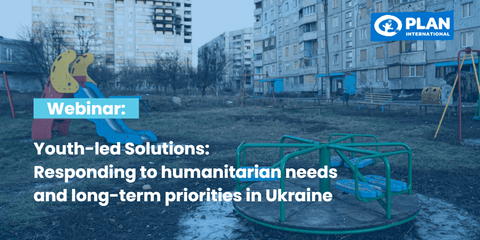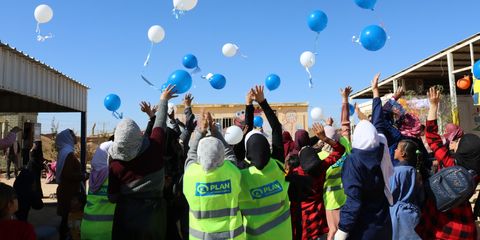Genuine Youth Engagement At A Bank? Did I Hear You Correctly?
13 June 2019The Asian Development Bank (ADB) is now 53 years old. It is not ‘young’ per the definitions of youth you will find used by UN agencies and other authorities on the subject. But in part, and piece by piece, it is striving to become ‘youthful’.
It was 2011 when Plan International started working with ADB on promoting the role of youth in development and highlighting the vital contribution young people are making to the development agenda. Plan started by advising ADB on how they could involve young people through events and building a knowledge base. That’s why in 2013, Plan and ADB signed a Memorandum of Understanding (2013-2016) which covered youth participation, project implementation, and knowledge generation, resulting in a co-created youth initiative called Youth for Asia (YfA).
Through YfA, young people from Asia and the Pacific are mainstreaming youth engagement in ADB projects through knowledge generation and sharing; youth consultations; project design, and partnerships across the region. In 2015, they established a youth projects team in YfA and this has become the most profound means through which meaningful youth engagement is being achieved. Currently, there are six youth project designers working full-time at the ADB Headquarters whose role is focused on embedding meaningful youth engagement in ADB projects.
So, how does that work?
A youth-led approach is so important, because young project beneficiaries instinctively relate to other youth leaders, and this cuts across barriers created by hierarchies and differences in background.
The youth project designers identify specific entry-points from the Bank’s project pipeline in its five regional departments across the Asia and the Pacific region. They prioritize understanding the complex yet specific format of ADB project cycle documents in order to effectively prove the value of youth engagement in ADB Operations. They determine which approaches are applicable in which context– examples include behavior change communications, peer-to-peer education, and leadership training.
Currently, Plan and ADB collaborate through the second MoU of the Partnership (2017 – 2020) which aims to continue building the capacity of YfA as well as covering the following themes and areas of work: (1) Poverty Reduction and Inclusive Growth; (2) Environment and Climate Change; (3) Gender and Disability Mainstreaming; (4) Private Sector Development; (5) Increased Knowledge Solutions; and (6) Strengthening ADB Role as Project Developer.
Intergenerational dialogues between young people and experienced-individuals lead to collaboration that gets the best out of each other.
The main strength of Youth for Asia is that it is grounded in practical project work. Development Banks are full of practical people – engineers, economists and urban planners. ADB’s mission is to eradicate poverty and its contribution to this goal is achieved primarily through investments in infrastructure and human capital. Having young people working on project teams achieves objectives that cannot be achieved through events and knowledge work alone. An important characteristic of youth that we build on is the ability of young people to form partnerships across diverse cultural and socio-economic backgrounds.
This is why a youth-led approach is so important as young project beneficiaries instinctively relate to other youth leaders, and this cuts across barriers created by hierarchies and differences in background. The second major benefit of this practical approach is that intergenerational dialogues between young people and experienced-individuals lead to collaboration that gets the best out of each other. The synergy of youth and experience is the sweet spot that we are constantly striving for. Our simple proposition is that projects will be better if young people are involved.
What are we up to in the future?
In some ways it’s more of the same but deeper, faster, better and more systematic. We are also striving to be as inclusive as possible, and this means nurturing young leaders from a diverse range of backgrounds. ADB’s new strategy, Strategy 2030, commits to reducing inequalities, and to achieve this, detailed operational planning from the top-down is taking place to ensure the organization is able to respond the challenges faced in the region.
For example, work is underway to deepen disability inclusion to match the great strides achieved in gender mainstreaming. Gender targets themselves, already stringent, have been made even stronger so that 75% of projects must now tackle gender inequality. The challenge of tackling youth unemployment and underemployment in a region in which 150 million young people are Not in Employment, Education or Training (NEET) is recognized in the strategy and operational plans. YfA sees addressing the needs of these 150 million young people as one of its main reasons for existing. It is through focusing on projects which economically empower young people that YfA aims to do its bit to tackle inequality in the Asia Pacific region and the world – leaving no one behind.
Categories: Youth empowerment




